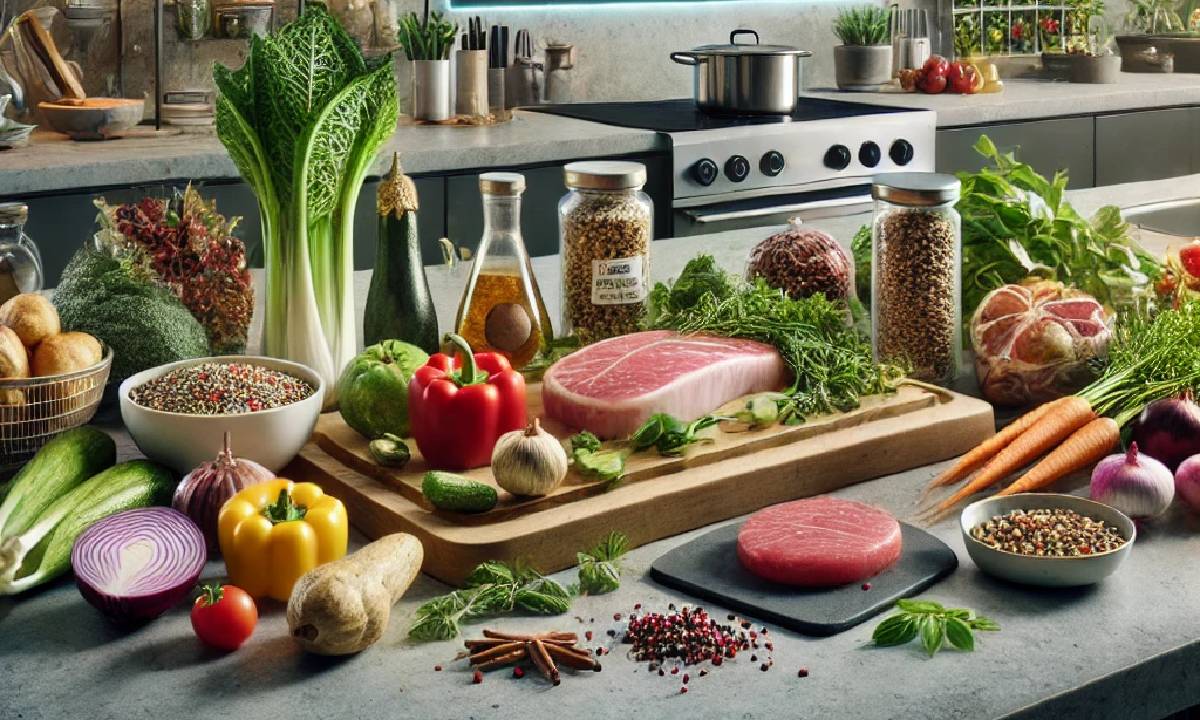Global culinary trends for 2025 are set to dazzle your taste buds with bold global flavor fusions, innovative protein sources, and a steadfast commitment to sustainability. This exciting new era is all about blending time-honored traditions with cutting-edge techniques from sustainable protein alternatives and tech-driven dining experiences to zero-waste cooking practices that redefine how we think about food.
The culinary world is evolving faster than ever, propelled by cultural shifts, rapid technological advancements, and a growing environmental consciousness. In 2025, these trends will transform every aspect of our dining experience, inspiring home cooks and professional chefs alike to rethink recipes and embrace the future of food.
1. Global Flavors Take Center Stage
In 2025, menus around the world will celebrate hyper-regional tastes and time-honored culinary traditions.
Key Highlights:
- African Cuisine on the Rise: Expect dishes like injera (Ethiopian flatbread) and jollof rice (West African staple) to gain mainstream popularity, celebrated for bold spices and unique textures.
- Asian Fusion Reinvented: Move beyond sushi and ramen. Discover creative fusions inspired by lesser-known dishes such as Filipino sinigang (sour soup) and Korean ganjang gejang (soy sauce-marinated crab).
- Latin American Staples: Ingredients like yuca, achiote, and chayote will become pantry essentials, lending authenticity and depth to Latin-inspired recipes.
This trend taps into a growing appetite for authentic, culturally rich flavors that let diners explore the world through food.
2. Protein Powerhouses: Beyond Meat and Dairy
Protein remains essential for nutrition—but its sources will diversify dramatically in 2025.
Innovations Include:
- Lab-Grown Meats: Cultivated proteins such as lab-grown chicken and seafood offer a sustainable alternative to traditional livestock.
- Plant-Based 2.0: Next-generation plant proteins, made from lentils, chickpeas, and algae, will mimic the taste and texture of meat more closely than ever.
- Insect Protein: Eco-friendly options like crickets, mealworms, and black soldier flies will emerge in snacks, bars, and even pasta.
- Fermented Proteins: Foods like tempeh and natto will rise in popularity, celebrated for both their protein content and gut-health benefits.
These innovations cater to health-conscious and environmentally aware consumers seeking nutrient-dense alternatives.
3. Tech-Driven Dining Experiences
Technology is reshaping every aspect of our culinary lives—from smart kitchens to innovative dining concepts.
Trend Drivers:
- AI-Powered Meal Planning: Smart appliances will use artificial intelligence to suggest recipes based on dietary preferences, available ingredients, and nutritional needs.
- 3D-Printed Foods: Personalized, visually stunning dishes—from custom chocolates to intricate pasta shapes—will become a reality.
- Vertical Farming: Urban agriculture will thrive, with vertical farms supplying fresh, locally grown produce directly to your table.
- Blockchain for Transparency: Expect detailed tracking of food origins, ensuring transparency in ingredient sourcing and ethical practices.
These advancements not only enhance convenience and sustainability but also open up new avenues for culinary creativity.
4. Functional Foods and Wellness-Driven Eating
In 2025, food will be more than just fuel—it will be viewed as a tool for health and well-being.
Focus Areas:
- Adaptogens and Superfoods: Ingredients like ashwagandha, moringa, and reishi mushrooms will be integrated into everyday meals to promote stress relief, boost immunity, and enhance overall wellness.
- Gut-Health Boosters: Fermented foods such as kefir, kimchi, and kombucha will continue to gain traction as consumers prioritize digestive health.
- Low-Sugar Alternatives: Natural sweeteners like monk fruit and allulose will replace refined sugars in desserts and beverages.
- CBD-Infused Cuisine: Cannabidiol (CBD) will be featured in everything from cocktails to baked goods, offering anti-inflammatory benefits and relaxation.
This holistic approach to food emphasizes nutrition, mental health, and long-term wellness.
5. Zero-Waste Cooking and Sustainable Practices
Sustainability will be at the forefront of culinary innovation in 2025, as the industry strives to reduce waste and protect the planet.
Sustainable Strategies:
- Nose-to-Tail & Root-to-Stem Cooking: Chefs and home cooks will maximize ingredients by using every part of an ingredient—from carrot tops to fish bones.
- Upcycled Ingredients: Expect creative products made from food byproducts, such as banana peel flour and spent grain crackers.
- Compostable Packaging: Eco-friendly packaging solutions will become standard among restaurants and food brands to minimize environmental impact.
- Local and Seasonal Eating: Consumers will favor locally sourced, seasonal ingredients, reducing carbon emissions and supporting regional farmers.
This shift toward sustainable practices not only benefits the environment but also sparks culinary innovation and creativity.
Embrace a Flavorful Future
The culinary innovations of 2025 promise a transformation that balances global diversity, cutting-edge technology, nutritional science, and sustainability. Whether you’re a foodie, home cook, or professional chef, now is the perfect time to explore new ingredients, experiment with creative techniques, and join the movement toward a more innovative and sustainable culinary world.

-1740465568.jpg)
-1740461640.jpg)


-1740130486.jpg)




-1741245072.png)
